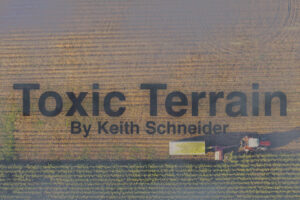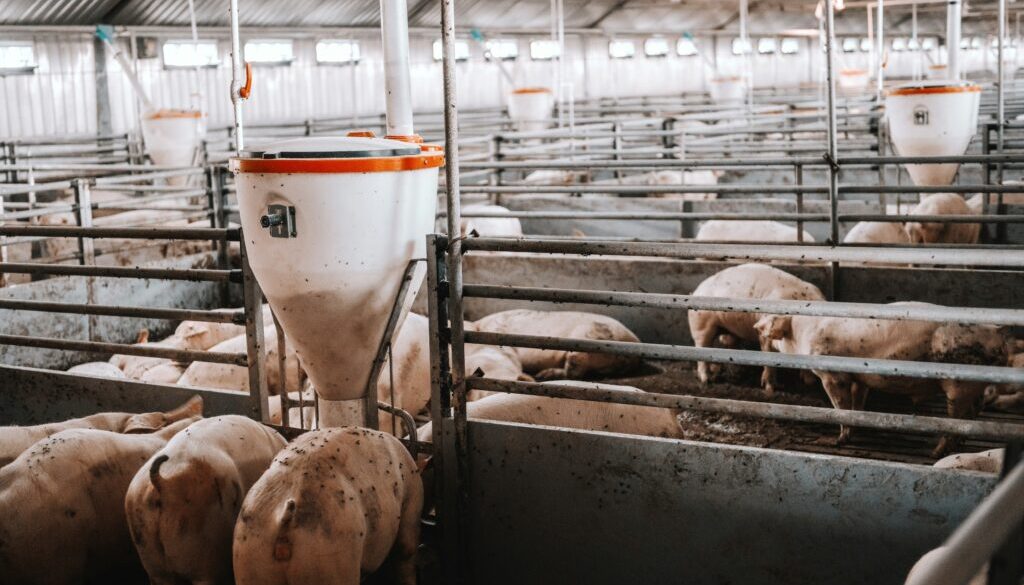EPA battles environmentalists in court over regulation of CAFOs and water pollution
 A coalition of environmental organizations faced off against the Environmental Protection Agency (EPA) in federal appellate court on Thursday in the latest skirmish in a long-running battle over the agency’s regulatory approach to water contamination connected to industrial agricultural operations.
A coalition of environmental organizations faced off against the Environmental Protection Agency (EPA) in federal appellate court on Thursday in the latest skirmish in a long-running battle over the agency’s regulatory approach to water contamination connected to industrial agricultural operations.
The groups, led by the nonprofit Food & Water Watch, told a three-judge panel of the 9th US Circuit Court of Appeals that the EPA must strengthen its oversight of what are known as concentrated animal feeding operations (CAFOs).
The agency is unlawfully allowing roughly half of the nation’s more than 20,000 big livestock and poultry feeding facilities around the country to operate without permits required under the 1972 Clean Water Act, the groups argued to the court. And, they said, the agency is violating the law by authorizing CAFOs to store and spread manure so haphazardly that the drinking water for millions of people is at risk as thousands of streams, lakes and other waterways are polluted with harmful bacteria, nitrates, phosphorus and other contaminants.
The agency has “failed” for more than a decade to adequately regulate these operations, Food & Water Watch lawyer Emily Miller told the court.
The hearing Thursday stems from a petition filed by Food & Water Watch and other groups in 2017 that called for the EPA to require CAFOs to obtain water quality permits and strengthen permit standards to protect waterways from the manure generated by the animal operations. The petition also urged the agency to reconsider an exemption that immunizes CAFOs from any water pollution caused by storms washing manure off of saturated fields.
The Trump administration ignored the petition. Last summer, the EPA formally denied the petition, but announced it would form a committee to recommend any changes in how the agency regulated CAFOs. Food & Water Watch, joined by four other national organizations and eight environmental groups from five states, then sued the EPA, demanding it reconsider its decision.
In the court hearing, EPA attorney Paul Cirino told the judges that the agency had initiated a detailed study of CAFO operations and pollution in January and established a study group last summer that is scheduled to issue recommendations on CAFO oversight next year. The new information, he said, would guide the agency’s actions about how to respond to the environmental groups’ concerns.
But Miller pushed back. “EPA has already spent seven years when it could have been taking its statutory mandate seriously,” she said. “Now they want some undefined amount of time thinking rather than acting.”
A court ruling on the matter could take months.
The fight over CAFOs regulation comes as the number of CAFOs grows as does the number of animals handled and the amount of manure they generate. Also growing is evidence of mounting pollution – and mounting opposition in many states.
“People recognize CAFOs are a big problem and something systemic needs to be done,” said Carrie La Seur, legal director at For Love of Water (FLOW), a Michigan-based environmental group.
In every state that big livestock and poultry facilities operate health and environmental authorities have documented manure discharges that contaminate streams, lakes, and drinking water, including contributing to toxic algae blooms.
In Iowa, a key farming state, half of all lakes, reservoirs, and river and streams tested are impaired, and many researchers and residents fear the state’s ranking of second-highest in the nation for rates of cancer is related to the pollution.
In North Carolina, for example, the rate of growth in the poultry sector has been particularly explosive. Nearly 357 million chickens and turkeys were housed on factory farms in North Carolina in 2022, a 43% increase since 2007. The poultry operations produce 3.2 million tons of manure annually that contains nitrogen, phosphorus and dangerous pathogens, according to an investigation by the Environmental Working Group released Thursday.
Overall, according to the 2022 Census of Agriculture, 1.7 billion animals are raised in US industrial feeding operations, nearly 50% more than in 2002. They are raised in over 20,000 factory farms. In all, about 1.4 billion tons of manure is produced by livestock and poultry yearly, according to the US Department of Agriculture.
The EPA has sought in recent years to more aggressively address the pollution from CAFOs, including issuing orders to state officials and individual CAFOs in four states Minnesota, Oregon, Washington, and Wisconsin to take action to halt manure runoff into ground and surface waters.
This month, the EPA warned Vermont state officials that unless its state agencies charged with overseeing CAFOs rapidly strengthen their regulatory programs, the EPA will assume the duties.
(This report, co-published with Circle of Blue, is part of an ongoing series looking at how agricultural policies are affecting human and environmental health.)
(Keith Schneider, a former New York Times national correspondent, is senior editor for Circle of Blue. He has reported on the contest for energy, food, and water in the era of climate change from six continents. )
(Featured photo by Unsplash+ in collaboration with Getty Images.)
 EWG
EWG


